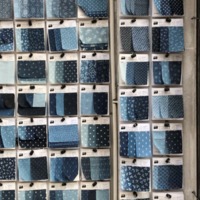Textiles and Weaving 紡織與製衣
Dublin Core
Title
Textiles and Weaving 紡織與製衣
Subject
Textiles
Weaving
Textiles Industry
Textiles Manufacturing
Textiles Wholesale
Description
In the 1950s-1970s, Hong Kong was famous for its textile industry and its mills and factories have become the collective memory of many citizens. The culture of textiles and weaving in Sham Shui Po, which used to be the heart of the textile industry of Hong Kong, is now still demonstrated by the numerous fabrics manufacturing stops around the district and several traditional textiles factories.
Contributor
Unknown
Relation
Nam Cheong Street, Yu Chau Street, Ki Lung Street, Tai Nan Street, Yen Chow Street Hawkers Bazaar
Type
Craftsmanship
Identifier
textilesandweaving
Craftsmanship Item Type Metadata
Materials or Ingredients
Buttons, Ribbons, Leather, Fabrics
History
Textile industry in Hong Kong started before the war, but with weaving preceded spinning in its development. During the 1930s, knitting and weaving industries in Hong Kong were already quite developed. However, there was no spinning factory at that time. Cotton yarns were imported for the local knitting and weaving factories. These cotton yarns were used to produce greige fabrics, which then became cotton socks, vests, homespun cloth, t-shirts and towels, etc. Products were made for the local market, as well as exported to mainland China, Southeast Asia, Europe and South America, etc.
Collection
Citation
“Textiles and Weaving 紡織與製衣,” Sham Shui Po, accessed November 7, 2025, https://learning.hku.hk/ccch9051/group-21/items/show/8.


